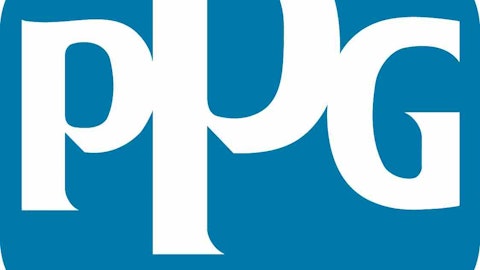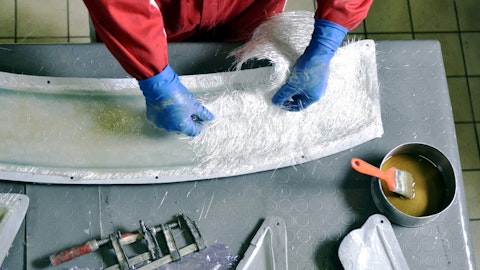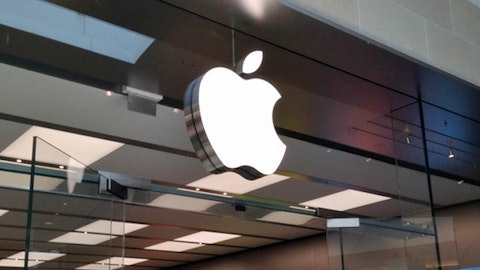As seen below, PPG’s sales fell by 23% in fiscal year 2009. Not surprisingly, construction, automotive, and industrial markets were especially hit hard during this time. Despite PPG’s decline in revenue, it managed to slightly improve its free cash flow in 2009 compared to 2008. As we mentioned earlier, PPG generates roughly half of its sales from aftermarket products and services, which are less discretionary in nature and provide more consistent cash flows.

Source: Simply Safe Dividends
As a result of its low capital intensity and focus on higher-margin specialty coatings markets, PPG has generated excellent returns on invested capital over the last decade for a chemical business and created value for shareholders.

Source: Simply Safe Dividends
Looking at the balance sheet, PPG appears to be in good shape. The company has an A- credit rating from S&P, and we can see why. The company could cover its entire debt with cash on hand and just 1.6 years of earnings before interest and taxes (EBIT). Its free cash flow generation last year nearly covered dividends paid by a factor of three as well. PPG’s dividend is very safe.

Source: Simply Safe Dividends
Dividend Growth Score
Our Growth Score answers the question, “How fast is the dividend likely to grow?” It considers many of the same fundamental factors as the Safety Score but places more weight on growth-centric metrics like sales and earnings growth and payout ratios. Scores of 50 are average, 75 or higher is very good, and 25 or lower is considered weak.
PPG has raised its dividend for 44 straight years, including a 7.5% increase in April 2015. The company continues to have excellent long-term dividend growth potential with a Dividend Growth Score of 77.
As seen below, this dividend aristocrat has accelerated its dividend growth rate from 4.3% per year over the last 10 fiscal years to 6.5% per year over the last three years. With low payout ratios and solid prospects to continue consolidating the fragmented coatings industry, we expect at least mid-single digit dividend growth to continue and believe PPG will be crowned a dividend king by 2022.

Source: Simply Safe Dividends
Valuation
PPG Industries, Inc. (NYSE:PPG) trades at about 15x forward earnings and has a dividend yield of 1.5%, which is slightly lower than its five year average dividend yield of 1.65%.
While currency headwinds and sluggish global growth are weighing on near-term results, we believe PPG can compound its earnings by 6-8% per year over the long term. The coatings market should grow by around the same pace as global GDP (2-3% per year) and PPG will likely continue making acquisitions (1-2%), repurchasing shares (1-2%), and expanding margins via productivity improvements and sales mix (1-2%).
If this plays out, the stock would appear to offer total return potential of 8-10% per year, which is slightly better than the market’s 7% historical average return and reasonably attractive for a business of PPG’s quality.
Conclusion
Other than its low dividend yield, sensitivity to raw material prices, foreign currency fluctuations, and cyclical end markets such as construction, there’s really not much to dislike about PPG. The company appears to be well positioned in numerous profitable niches, has a leading portfolio of coatings technologies, regularly pushes through price increases, and generates excellent free cash flow each year. With less than 12% share of the global market, growth opportunities shouldn’t be a problem either.
While PPG’s dividend yield is relatively low (1.5%) and its dividend growth hasn’t ramped up yet because the company is reinvesting in itself and acquisitions, we think this is an interesting business for truly long-term dividend growth investors. PPG’s starting dividend yield is below the threshold we like for our Top 20 Dividend Stocks portfolio, but we will continue watching this proven compounder.
Disclosure: None





